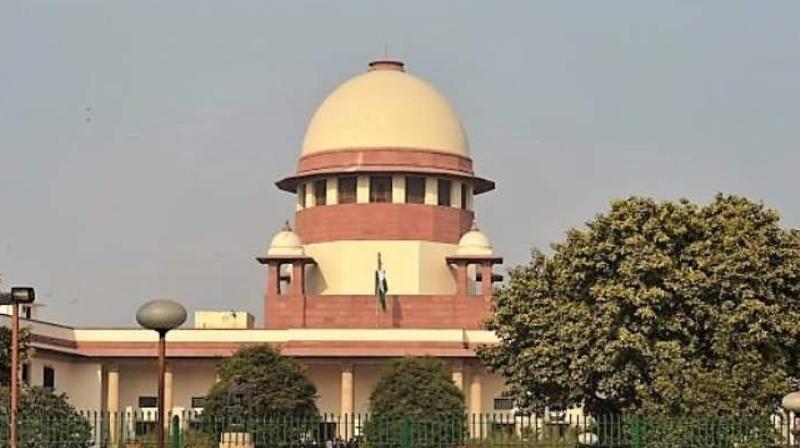Supreme Court gives nod to redevelopment of Central Vista
A batch of petitions challenged the plan for demolition of old structures and constructing new buildings

New Delhi: The Supreme Court on Tuesday by a majority judgment of 2:1 gave its nod to Prime Minister Narendra Modi’s ambitious Rs 20,000 crore project for the construction of a new Parliament building and the redevelopment of the Central Vista.
In his dissenting verdict, Justice Sanjiv Khanna held the project was "bad in law" in terms of land use for two reasons. "There is no intelligible disclosure of public participation and no prior approval of the heritage conservation committee," the judge said.
In their 432-page majority judgment, Justice A.M. Khanwilkar speaking for himself and also Justice Dinesh Maheshwari said that the government's decision to change the land use for the project and the environment clearance by the ministry of environment and forests (MoEF) was “just, proper and in accordance with law.”
A batch of petitions had challenged the plan for demolition of old structures and new construction, including a new Parliament building in approximately 86 acres of land in the heart of the national capital.
Apart from the change in land use, and the manner and procedure adopted for making the changes in the Central Vista precincts The petitioners had argued that there were irregularities in the process that involved the approval of the design, clearance on monetary allocations, and the tendering processes, other regulatory clearances on environment and from local municipal bodies.
Holding that there was no “infirmity” in the grant of “no objection” by the Central Vista Committee, “approval” by the Delhi Urban Art Commission and the “prior approval” by the Heritage Conservation Committee, the majority judgment said, “We further hold that the exercise of power by the Central government under Section 11A(2) of the DDA Act, 1957, is just and proper and thus the modifications regarding change in land use… vide impugned notification dated 20.3.2020 stands confirmed.”
However the court ordered prior permission of the Heritage Conservation Committee before the actual start of the construction work, and not just at the incipient stage of planning and formalisation.
The court that disposed of eight petitions challenging the project, however, ordered setting up of the smog towers of adequate capacity as an integral part of the new Parliament building and use of smog guns at the construction site throughout the construction phase.
It also directed the MoEF to install the smog towers in all future major development projects, including those relating to government buildings, townships or even private ones, particularly in cities with a bad track record of air quality.
In his 179-page dissenting judgment Justice Sanjiv Khanna quashed the notification of March 20, 2020, on changes in the land use of six plots in the Central Vista, noting the petitioners' main grievance that the project was hurried without proper public consultation, and ordering fresh public scrutiny.
Justice Khanna ordered the Centre to "put in public domain on the web, intelligible and adequate information along with drawings, layout plans, with explanatory memorandum, etc. within a period of seven days,” issue advertisement in the print media within seven days and allow suggestions and objections with four weeks, mentioning date, time and place of the public hearing by the Heritage Conservation Committee.
“Heritage Conservation Committee would pass a speaking order setting out reasons for the conclusions”, Justice Khanna said in his dissenting judgment.
The petitioners Rajeev Suri, some retired bureaucrats and eminent people had moved the top court challenging change in land use and other permissions, including environment and heritage clearances.
The majority judgment noted that the objective of the project is to create a larger working space for efficient functioning of the highest legislative wing – Parliament — of the country and for integrated administrative block for ministries that are presently spread out at different locations, including on rental basis.
It noted that the Parliament House building, which is a 93-year-old Grade-I heritage structure commissioned in 1927, does not meet the requirements to accommodate an increasing number of MPs and its Central Hall, with a seating capacity of only 440 persons, falls short of the need to accommodate MPs of both the Houses during a joint session. Also, the structure falls short of fire, water and electricity safety norms, posing a grave security risk to MPs and staff.
The new Parliament building is to be constructed with futuristic approach, with the House of People (Lok Sabha) being three times the size of the present chamber besides other constructions in the Parliament complex.
The project also envisages housing of all the 51 ministries in 10 buildings with an integrated complex, with underground transit connectivity.
Expressing the need for urgent completion of the project, it has been stated by the government that the new Parliament meeting the needs of vibrant Indian democracy shall symbolise the 75th Independence Day of the country in 2022 as well as the G20 Summit to be hosted by India in the same year.
The common Central secretariat with all ministries in a single location for efficiency and synergy in functioning and redevelopment of the Central Vista as a world class public space and venue for national and international events were other factors cited by the government to change the face of what is today known as "Lutyens' Bungalow Zone".

